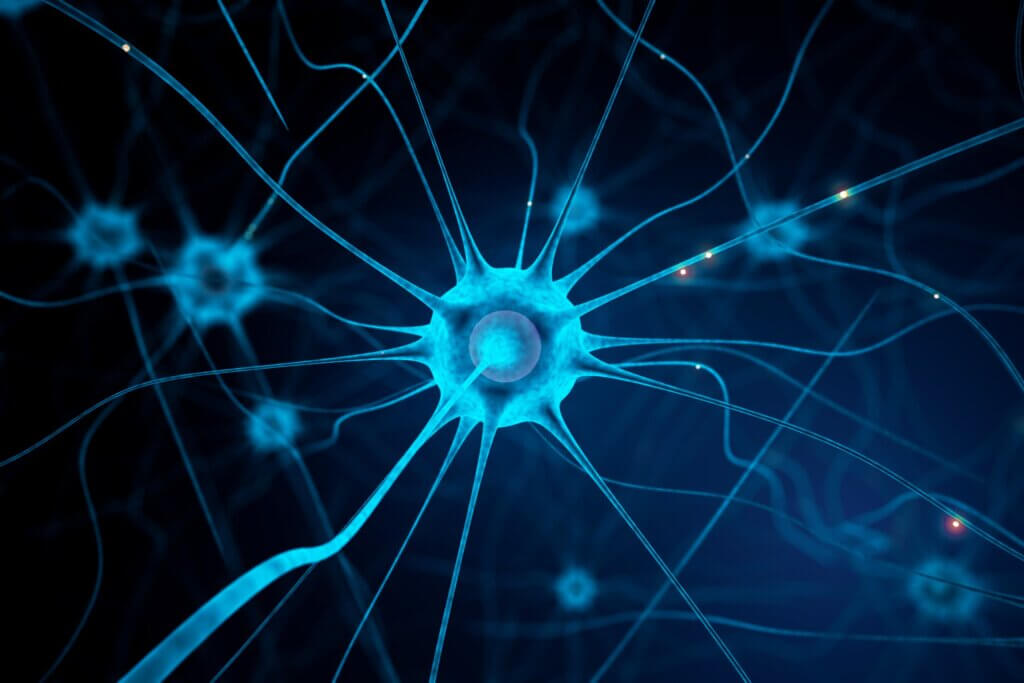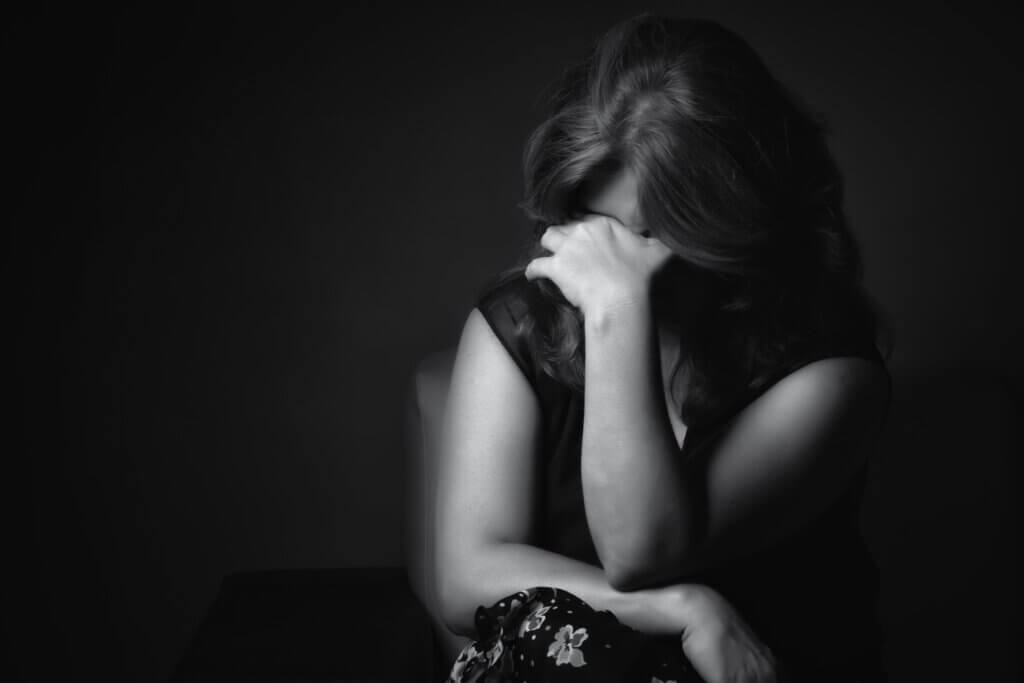How Pain Affects Mood

Mood and pain are more closely related than is often thought. Pain affects mood and, in the same way, state of mind can affect pain. They thus form a very complex network, one that manifests itself primarily in patients with chronic pain. We’ll show you what’s known about this relationship and some interesting facts about it.
Mood has been known for decades to be a valuable component in reducing pain. The relationship is partially ignored among the general public, which can contribute to imbalances in both pain itself and mood. The exact mechanism is still unknown, but the relationship isn’t disputed by scientists.
The relationship between pain and mood
As the evidence indicates, the perception and expression of pain and the reaction to it are mediated by genetic, family, psychological, social, cultural, and developmental variables. Pain is a very complex phenomenon, even more so when chronic pain episodes are taken into account.
Precisely, research has suggested that the latter have a direct impact on the identity of the person; not so in the case of mild or temporary pain. In other words, it’s much more likely that your pain affects mood and vice versa in contexts in which the latter is manifested with a high intensity than when it’s mild or moderate.
It’s pertinent to take gender variables into account to analyze how pain affects mood. A study published in Gender Medicine in 2005 determined that women are more sensitive to stimuli related to threats (such as pain), but at the same time, they have mechanisms to inhibit their effects. That is, women can tolerate pain better than men.
Researchers have found that negative mood reduces tolerance for acute pain, and there’s also evidence that it does the same for chronic pain. According to some estimates, up to 70% of patients dealing with chronic episodes of pain report mood alterations. This creates a snowball effect, as it in turn increases the sensitivity of the pain itself.
How pain affects mood?

As researchers rightly point out, the mechanisms by which pain affects mood, and vice versa, are not known. It’s believed that the answer may begin with emotions, which gradually worsen the pain and thus produce a mutual mismatch. A study published in Pain in 2017 investigated the influence of negative mood on the functional brain network.
The group of scientists found that the default mode network (DMN) is altered by people’s negative moods. DMN has been proposed as a key biomarker for several chronic pain conditions. On the contrary, positive moods seem to preserve this network.
It’s also thought that the influence of pain on emotions is nothing more than a natural response to what’s known as the fight or flight response. Pain itself is crucial to our survival, so it triggers a series of changes in the body. They can be both physical and chemical, and the latter can cause a temporary imbalance on the emotional level.
The domino effect that’s created by this bond can have multiple consequences, including stress, anxiety, and anguish. It can adjust the degree of sensitivity to pain and the response mechanism that alerts you to situations that are perceived as threatening. It can also affect cognition and so-called body awareness and encourage negative emotions.
Depression and pain

The relationship between pain and depression deserves a separate comment. Many patients with chronic pain develop depression, a disorder that can reduce pain tolerance.
In fact, as Harvard Health Publishing reminds us, people with chronic pain are three times more likely to develop depression, and the latter are at the same risk of developing chronic pain.
The connection is therefore bidirectional and affects both the physical and emotional plane of the patient. Depression manifested by chronic pain is thought to result from what’s known as adjustment disorder, although genetic, physiological, and environmental factors also play a role. Certainly, not everyone develops pain or depression in the process.
Both episodes are known to hinder the treatment of the other. Physiological and biochemical reactions to pain can mediate the effectiveness of a depressant medication, and depression can do the same for pain medications. It’s for this reason that researchers point out that in many contexts, treatment is insufficient, which leads to a deterioration in the well-being of the person.
To name just a few, depression can manifest in patients who’ve been diagnosed with lower back pain, chronic fatigue syndrome, fibromyalgia, arthritis, osteoporosis, peripheral neuropathy, trauma, and migraine headaches. Various treatment spectrums are considered to deal with both episodes, all in order to prevent mutual feedback.
Much of the process through which pain affects mood is still unknown. There’s no doubt about their connection, so both specialists and patients should be aware of this connection. The mind and the body aren’t two separate entities but are part of the whole. Therefore, what affects one sooner or later will affect the other.
Mood and pain are more closely related than is often thought. Pain affects mood and, in the same way, state of mind can affect pain. They thus form a very complex network, one that manifests itself primarily in patients with chronic pain. We’ll show you what’s known about this relationship and some interesting facts about it.
Mood has been known for decades to be a valuable component in reducing pain. The relationship is partially ignored among the general public, which can contribute to imbalances in both pain itself and mood. The exact mechanism is still unknown, but the relationship isn’t disputed by scientists.
The relationship between pain and mood
As the evidence indicates, the perception and expression of pain and the reaction to it are mediated by genetic, family, psychological, social, cultural, and developmental variables. Pain is a very complex phenomenon, even more so when chronic pain episodes are taken into account.
Precisely, research has suggested that the latter have a direct impact on the identity of the person; not so in the case of mild or temporary pain. In other words, it’s much more likely that your pain affects mood and vice versa in contexts in which the latter is manifested with a high intensity than when it’s mild or moderate.
It’s pertinent to take gender variables into account to analyze how pain affects mood. A study published in Gender Medicine in 2005 determined that women are more sensitive to stimuli related to threats (such as pain), but at the same time, they have mechanisms to inhibit their effects. That is, women can tolerate pain better than men.
Researchers have found that negative mood reduces tolerance for acute pain, and there’s also evidence that it does the same for chronic pain. According to some estimates, up to 70% of patients dealing with chronic episodes of pain report mood alterations. This creates a snowball effect, as it in turn increases the sensitivity of the pain itself.
How pain affects mood?

As researchers rightly point out, the mechanisms by which pain affects mood, and vice versa, are not known. It’s believed that the answer may begin with emotions, which gradually worsen the pain and thus produce a mutual mismatch. A study published in Pain in 2017 investigated the influence of negative mood on the functional brain network.
The group of scientists found that the default mode network (DMN) is altered by people’s negative moods. DMN has been proposed as a key biomarker for several chronic pain conditions. On the contrary, positive moods seem to preserve this network.
It’s also thought that the influence of pain on emotions is nothing more than a natural response to what’s known as the fight or flight response. Pain itself is crucial to our survival, so it triggers a series of changes in the body. They can be both physical and chemical, and the latter can cause a temporary imbalance on the emotional level.
The domino effect that’s created by this bond can have multiple consequences, including stress, anxiety, and anguish. It can adjust the degree of sensitivity to pain and the response mechanism that alerts you to situations that are perceived as threatening. It can also affect cognition and so-called body awareness and encourage negative emotions.
Depression and pain

The relationship between pain and depression deserves a separate comment. Many patients with chronic pain develop depression, a disorder that can reduce pain tolerance.
In fact, as Harvard Health Publishing reminds us, people with chronic pain are three times more likely to develop depression, and the latter are at the same risk of developing chronic pain.
The connection is therefore bidirectional and affects both the physical and emotional plane of the patient. Depression manifested by chronic pain is thought to result from what’s known as adjustment disorder, although genetic, physiological, and environmental factors also play a role. Certainly, not everyone develops pain or depression in the process.
Both episodes are known to hinder the treatment of the other. Physiological and biochemical reactions to pain can mediate the effectiveness of a depressant medication, and depression can do the same for pain medications. It’s for this reason that researchers point out that in many contexts, treatment is insufficient, which leads to a deterioration in the well-being of the person.
To name just a few, depression can manifest in patients who’ve been diagnosed with lower back pain, chronic fatigue syndrome, fibromyalgia, arthritis, osteoporosis, peripheral neuropathy, trauma, and migraine headaches. Various treatment spectrums are considered to deal with both episodes, all in order to prevent mutual feedback.
Much of the process through which pain affects mood is still unknown. There’s no doubt about their connection, so both specialists and patients should be aware of this connection. The mind and the body aren’t two separate entities but are part of the whole. Therefore, what affects one sooner or later will affect the other.
- Bair, M. J., Robinson, R. L., Katon, W., & Kroenke, K. Depression and pain comorbidity: a literature review. Archives of internal medicine. 2003; 163(20): 2433-2445.
- Blågestad, T., Pallesen, S., Grønli, J., Tang, N. K., & Nordhus, I. H. How perceived pain influence sleep and mood more than the reverse: a novel, exploratory study with patients awaiting total hip arthroplasty. Frontiers in psychology. 2016; 7: 1689.
- Linton, S. J., & Bergbom, S. Understanding the link between depression and pain. Scandinavian Journal of Pain. 2011; 2(2): 47-54.
- Letzen JE, Robinson ME. Negative mood influences default mode network functional connectivity in patients with chronic low back pain: implications for functional neuroimaging biomarkers. 2017 Jan;158(1):48-57.
- KOLODNY AL. Importance of mood amelioration in relief of pain. A controlled comparative study of three analgesic agents. 1963 Jul-Aug;4:230-3.
- Martucci KT. Disentangling mood and pain: a commentary on 2 manuscripts. Pain. 2017;158(1):4-5.
- Morley, S. Psychology of pain. British journal of anaesthesia. 2008; 101(1): 25-31.
- McGrath, P. A. Psychological aspects of pain perception. Archives of Oral Biology. 1994; 39: S55-S62.
- Rhudy, J. L., & Williams, A. E. Gender differences in pain: do emotions play a role?. Gender medicine. 2005; 2(4): 208-226.
- Tang NKY, Salkovskis PM, Hodges A, Wright KJ, Hanna M, Hester J. Effects of mood on pain responses and pain tolerance: an experimental study in chronic back pain patients. Pain. 2008 Aug 31;138(2):392-401.
- Willoughby SG, Hailey BJ, Mulkana S, Rowe J. The effect of laboratory-induced depressed mood state on responses to pain. Behav Med. 2002 Spring;28(1):23-31.
Este texto se ofrece únicamente con propósitos informativos y no reemplaza la consulta con un profesional. Ante dudas, consulta a tu especialista.







